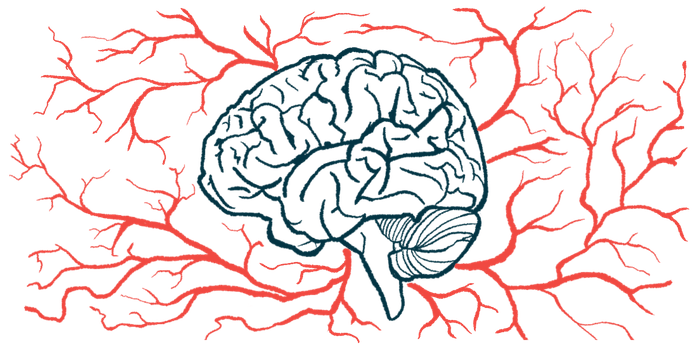Radiation therapy leads to new tumor in Cushing’s disease patient
Secondary tumor was inoperable and aggressive, growing despite treatment

Radiation therapy, which is often used when surgery fails to completely remove a pituitary tumor, led to the development of a secondary and aggressive tumor in a woman with Cushing’s disease.
“Our case highlights a rare but devastating long-term complication of pituitary tumor irradiation after Cushing disease. The limited response to various available treatment options defines the aggressive nature of radiation-induced malignancy,” the scientists wrote.
The case was described in the article “Radiation-induced Undifferentiated Malignant Pituitary Tumor After 5 Years of Treatment for Cushing Disease,” published in the journal JCEM Case Reports.
Radiation therapy given with Cushing’s disease to shrink a pituitary tumor
In Cushing’s disease, high cortisol levels are due to a pituitary adenoma, a usually benign (not cancerous) tumor that forms in the brain’s pituitary gland.
The tumor produces and releases a signaling molecule called adrenocorticotropic hormone (ACTH), which triggers the excess production of cortisol by the adrenal glands. This causes a wide range of disease symptoms, including weight gain, muscle weakness, and extreme fatigue.
A first-line treatment for Cushing’s disease often is surgery to remove the pituitary tumor. Radiation therapy, also known as radiotherapy, is commonly used to shrink the tumor in patients who are not eligible for surgery. It also can be used in cases where surgery has failed to completely removed the tumor, when the tumor comes back after surgery, and when tumors become invasive and spread to nearby tissues.
However, radiotherapy may lead to complications, most often hypopituitarism, which occurs when the pituitary gland fails to produce enough of certain hormones, and in rare cases, causes secondary tumors.
Clinicians in India described the case of a woman with Cushing’s disease who developed a secondary tumor after receiving radiotherapy.
The woman, age 40, was diagnosed with Cushing’s disease in 2014. She showed Cushingoid features and had experienced weight gain, new-onset diabetes, and high blood pressure.
Blood work confirmed she had very high cortisol and ACTH levels. Further brain imaging scans revealed the presence of a very large pituitary adenoma, which had spread to nearby tissues, particularly the suprasellar cistern — a fluid-filled space between the pituitary gland and a brain region called hypothalamus.
Fractionated radiation therapy given after tumor was not removed fully
She underwent surgery, but the tumor could be only partly removed, since it had spread into the cavernous sinus — a cavity at the base of the brain. Analysis of tumor tissue confirmed it to be an ACTH-producing tumor.
Despite the surgery, her blood work still showed abnormalities, with no signs of disease remission. She was started on ketoconazole, an anti-fungal medication that can be used to lower cortisol levels in people with Cushing’s.
She also began fractionated radiotherapy, in which the therapy is delivered over days in small doses called fractions.
During the next five years, she continued with ketoconazole due to elevated ACTH levels. A brain scan then showed changes in the suprasellar region and an increase in her tumor’s size. She was advised to undergo hypofractionated radiation schedules, in which larger doses of radiation are given daily, but she did not.
In 2021, she developed a severe headache, accompanied by double vision, seizures, and weakness on the left side of the body. Blood work confirmed elevated ACTH and cortisol levels.
Brain scans showed a further increase in tumor size, which led to compression of the brainstem, a region at the base of the brain that regulates vital functions like breathing and heart rate.
She immediately underwent brain surgery to relieve the compression, and an analysis of tumor tissue analysis suggested it was an aggressive, malignant radiation-induced sarcoma.
Since the tumor was inoperable, the patient again was given fractionated radiotherapy delivered daily. During the next year and a half, the tumor was kept under control and she experienced no further symptoms.
Ketoconazole was gradually tapered off, but she developed hypopituitarism. She started on levothyroxine and glucocorticoid replacement therapy, improving her condition significantly.
In 2022, after 1.5 years of radiation therapy, weakness on the left side of the body returned. The tumor had significantly increased in size, and she again underwent decompression surgery.
No improvements were seen over two months following the surgery, during which the tumor grew in size by 30%. The woman died due to an episode of aspiration pneumonia, which occurs when food or liquid is inhaled into the airways or lungs.
“The incidence of radiation-induced sarcomas has been estimated at 0.03% to 0.3% of patients who have undergone radiation therapy,” the scientists wrote.
Given the severity of such a complication, they highlighted the need to review radiotherapy strategies “closely for risk assessment of [a] secondary tumor.”







